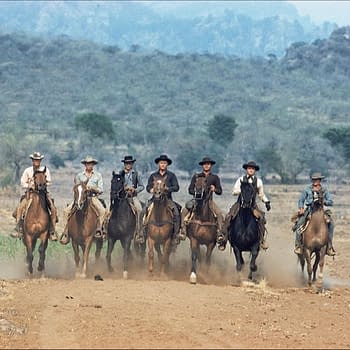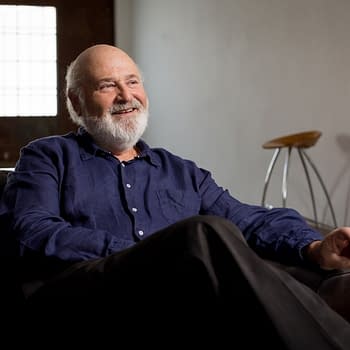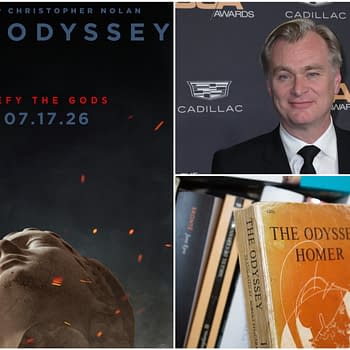Posted in: Movies | Tagged: Alan Cumming, Richard Ledes, V13
V13 Director on 19th Century Filmmaking Inspirations & History Lessons
Writer/director Richard Ledes (The Caller) spoke to Bleeding Cool about the 19th century inspirations, not repeating history & more in V13.
Article Summary
- Explore V13's nod to 19th-century film and psychoanalysis through alternating black & white and color scenes.
- Discover the nuanced performances by Liam Aiken and Samuel H. Levine as Hugo and Adolf in V13.
- Uncover the challenges of filming V13's historical narrative in modern-day New York City settings.
- Connect V13's historical themes to today's political climate and the importance of engaging with history.
Director and writer Richard Ledes is as passionate as they come when it comes to filmmaking and its invaluable resource to teach as well as entertain from his works in the World War II-themed A Hole in One (2004), crime thriller The Caller (2008), and historical film Adieu, Lacan (2022). His latest is an adaptation of an Alain-Didier Weill (who co-wrote The Caller) play, V13. Taking place in 1913 Vienna on the brink of World War I, the film presents two young friends: Hugo (Liam Aiken), a musician from a privileged family engaging in psychoanalysis with Sigmund Freud (Alan Cumming), and Adolf (Samuel H. Levine), a struggling artist obsessed with vegetarianism who falls in love with German nationalism. Ledes spoke to Bleeding Cool about his use of alternating scenes in black and white and color, Aiken and Levine's performances, and the lessons he wants audiences to take away from V13.
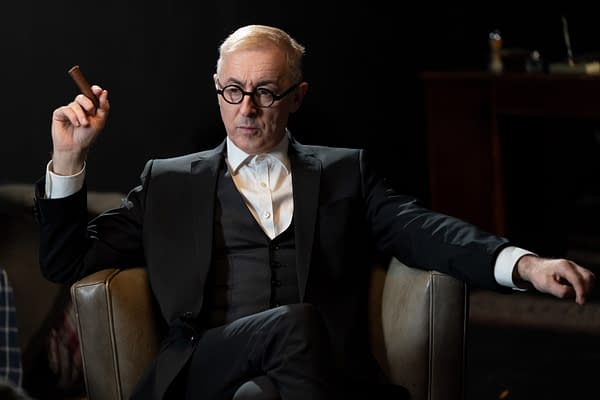
V13 Director Richard Ledes on Paying Tribute to Filmmaking Pioneers, Telling Historical Tale
Bleeding Cool: What went into the stylistic decision to alternate between black and white and color in the sequences, particularly during the Freudian office scenes? What went into the selection process of the vintage films selected in theater scenes?
To answer your first question, I changed the ratio of the film (from 16:9) to 4:3 since it was the original aspect ratio of black and white footage. It reflected the birth of psychoanalysis and cinema at the end of the 19th century. The films they're watching were the first from the Lumiere brothers showed in a cinema in Paris. It harks to that earlier period; black and white seems to be more philosophical. The (4:3) aspect ratio is also great for close-ups, as we see in Carl Dreyer's 'Joan of Arc' (1928), for example, which was a model I used when I made my first film, 'Adieu, Lacan' (2022), which was largely about psychoanalysis. I went back, and in this film ('V13'), did the 4:3 black and white for the psychoanalytic scenes, which I thought was the way to go.
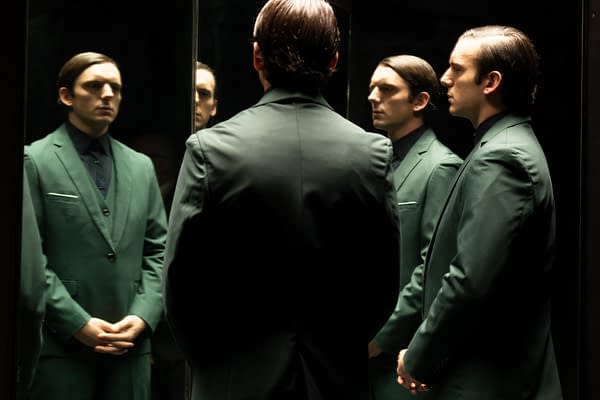
The other film sequences the young Adolf saw with his group are the Lumiere brothers, which would be one of the main influences on his adoption of anti-Semitism as the glue that would hold together Nazism or the extreme German ethno-nationalism. In the film, up until then, we see Adolf as this young guy who's coming apart at the seams, a little lost and confused, and then puts it all together by hating a vulnerable minority group. It makes his ethno-nationalism work, and he was also known for his interest in opera. If you look at World War II, film played a major role in terms of the ideology, and what people are looking at, the masses of Americans, Germans, and French.
There's a huge, it becomes the world form of what the Germans term, "Gesamtkunstwerk," the total artwork, which referred to opera, but in ways, it becomes film. It was an intriguing idea to have Adolf introduced both to a conception of racial hatred at the same time he would be associated with film. The film plays a very ambivalent role in world history. In the case of the United States, we must look at 'Birth of a Nation' (1915), which is about the Ku Klux Klan and is a major work of D. W. Griffith, perhaps the most significant early figure in American filmmaking.
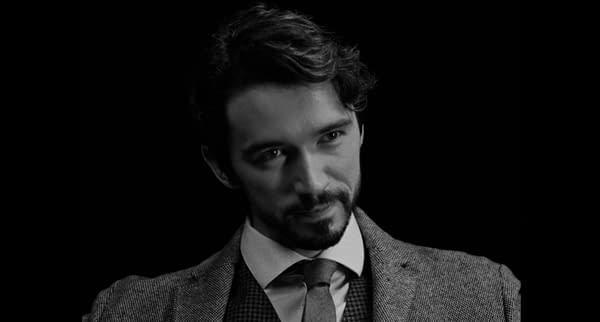
Can you talk about the presence Liam and Samuel have as Hugo and Adolf and the way they carry themselves over on screen?
They're two young men who have become friends. One is analyzed by Freud, and the other slowly falls in love with German ethno-nationalism. What they have in common is an interest in art. They meet at an art gallery. Adolf is a "starving artist," and Hugo is from a well-to-do Austrian and Viennese family. Their mutual interest in art becomes the catalyst for their friendship and also where it breaks apart.
What do you feel was the most difficult part about navigating through both their journeys and the film?
Ah! The most difficult part was I made this decision to translate this prior moment in history to (film in) current-day New York City, and particularly the Bronx, with some very important assistance from the other boroughs, including Coney Island for the Prater, the Ferris wheel of the Prater. I would say making location scouting and translation work were perhaps the greatest challenge. Korey Diskin, the production designer, did a huge lift in helping me find the various locations, most of them in the Bronx we used for the film.
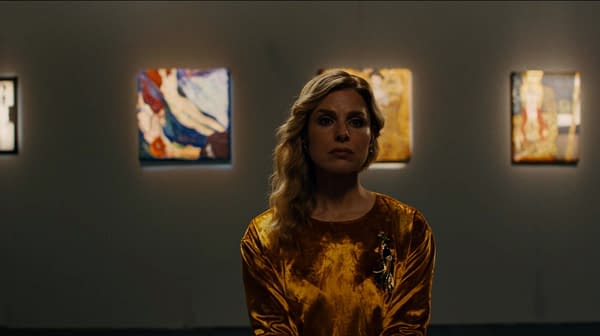
What did you want audiences to take away as far as lessons from 'V13' as it relates to today's political climate?
I guess that today's political climate is very unstable and fractured. We need to be engaged with the past. We can't be passive observers because we must realize that one of the things that's being fought for now is the past and recalling the past. We must be involved in the writing of history.
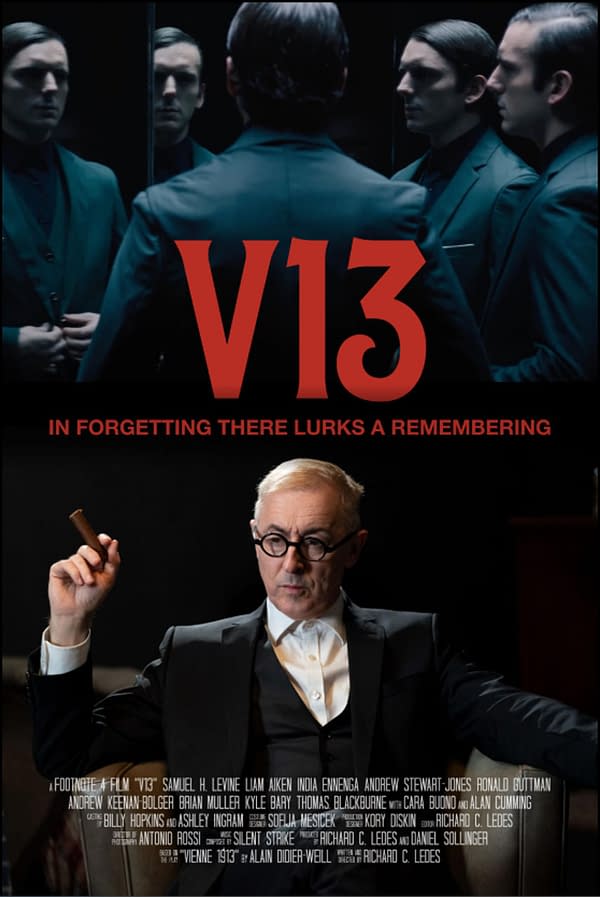
For more, you can check out part one. V13, which also stars Ross Alden, Carol Axel, Kyle Bary, Ehad Berisha, Thomas Blackburne, and Cara Buono, is available to rent or purchase on Venmo and releases digital platforms on May 13th on Apple TV, Prime Video, Google Play, and Fandango at Home.






